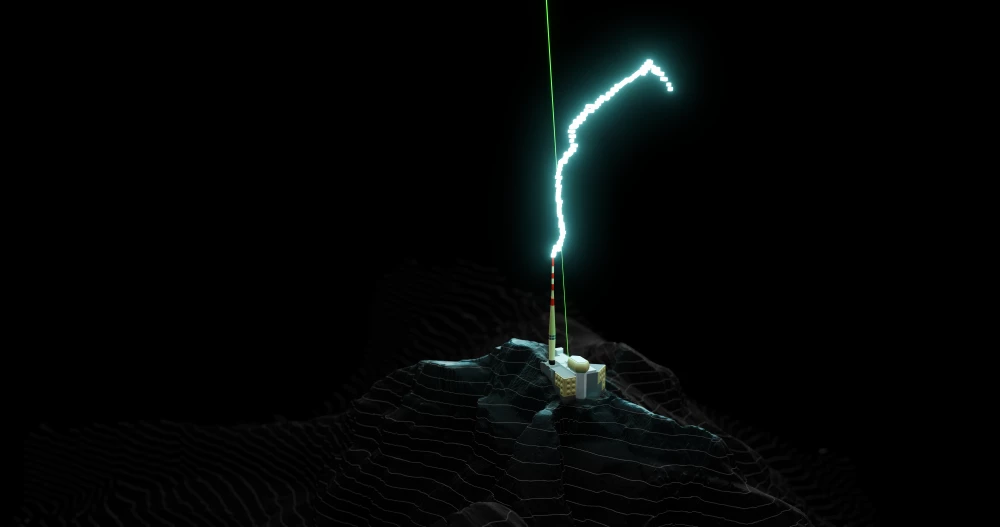Lightning rods have been used to guide lightning strikes for centuries, but now scientists have demonstrated something a bit more advanced than a humble metal stick. Beaming a high-powered laser into the sky was shown to deflect lightning bolts, which could lead to laser lightning rods that protect a wider area from dangerous strikes.
Lightning is one of the most energetic natural events, unleashing millions of volts in fractions of a second. That of course can be destructive, damaging buildings, cutting power, starting fires and causing injuries and deaths.
For centuries our best defense against lightning strikes has been the lightning rod, a simple metal stick attached to tall buildings that attracts the electricity and guides it safely to the ground. But they have limited range – a 10-m (33-ft) lightning rod can protect an area of just 10 m around itself. To protect a building as big as say an airport or wind farm would require unfeasibly large lightning rods.
Now, researchers in Europe have demonstrated a more effective new system. The Laser Lightning Rod (LLR) involves, as the name suggests, beaming a laser into the clouds during a storm to forge a path of least resistance for the electricity to flow through. And it can extend much further than a lightning rod.
“When very high power laser pulses are emitted into the atmosphere, filaments of very intense light form inside the beam,” said Jean-Pierre Wolf, last author of the study. “These filaments ionize the molecules of nitrogen and oxygen present in the air, which then release free electrons to move. This ionized air, called ‘plasma’, becomes an electrical conductor.”
To demonstrate the concept, the scientists developed a new laser system with an average power of 1 kW, pulsing about 1,000 times per second while unleashing one Joule of energy per pulse. This was set up on the summit of Säntis, in the Swiss Alps, near a tower that attracts about 100 lightning strikes every year.
Between June and September 2021, the team tested the system during storms that swept through the area. The laser was beamed into the sky near the top of the tower, to try to coax the lightning to the beam before it reached the tower’s regular lightning rod. During that summer, four lightning strikes hit the tower while the laser was switched on, and sure enough it bent the bolt.

“We found, from the first laser lightning event, that the discharge could follow the beam for almost 60 m (197 ft) before reaching the tower, thus increasing the radius of the protection surface from 120 m to 180 m (394 to 590 ft),” said Wolf.
The idea of using lasers as lightning rods has been around for a long time, and has shown promise in lab experiments, but the team says that this is the first time it’s been demonstrated out in the real world. Other scientists have proposed that graphene tractor beams could do the job even better, but that would require more complex setups.
The eventual goal of the LLR project is to use a laser to extend a 10-m lightning rod’s influence by 500 m (1,640 ft), the team says.
The research was published in the journal Nature Photonics. The team describes the work in the video below.
Source: UNIGE




